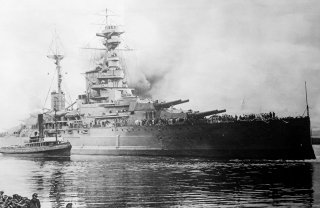Operation Catherine: Winston Churchill’s Plan to Take Berlin (And Crush Hitler) in 1940
Why didn't it happen?
Ever a proponent of bold and decisive plans, Churchill had an idea on how to stop the Second World War dead—by taking Berlin in a surprise attack. His plan was actually a more mature version of the World War I Baltic Project, an operation that would have sidestepped the grinding trench warfare of the Western Front by landing a British or Russian army on Germany’s northern Pomeranian coast.
Today part of Poland, Pomerania is a low coastal territory that lies next to the Baltic Sea—and was less than 100 miles from Berlin. If the Allies could somehow land a force of significant strength in Pomerania, they could threaten the German capital and if not end the war, then perhaps establish a toehold near the German capital could be used to draw German divisions from other theaters to the new front.
Secondary mission objectives were similarly ambitious: prevent Scandinavian iron from reaching Germany; convince some of the Scandinavian countries to join the Allies against Germany; and to demonstrate allied strength and resolve to a belligerent Soviet Union.
The Navy’s Revenge
Churchill envisioned a surface fleet of three old Revenge-class battleships, five cruisers, an aircraft carrier, submarines, and other supporting ships steaming into the Baltic. Two of the battleships, the Revenge and Royal Oak had seen limited action during the First World War.
They were massive, sporting eight 15-inch naval guns arranged in superfiring twin turrets. The 15-inch guns fired a nearly 2,000 pound explosive shell out to 20 miles, and were considered the most reliable and accurate main naval guns of the war. Though mighty, the Revenge-class was also mighty slow, and in 1939 possibly the slowest capital ships in the Royal Navy.
Due to their 15-inch guns, Churchill was not worried about opposing German battleships, which he was confident would be blown out of the water. Arial attack was the greatest danger to the slow battleships. In order to mitigate armor-piercing bombs, Churchill set upon reinforcing the battleship decks with layers of armor plating, pushing their draft further down into the shallow Baltic, and further reducing speed.
To protect against mines and torpedoes, Churchill drew up plans for outfitting the ships with enormous bulges or blisters that would be mated to the ships at the waterline, extending the width of their hulls. These blisters could be filled with air and add to the ships buoyancy, giving them a shallower draft. They would also act as naval bumpers of sorts, and would detonate mines and torpedoes at a safe distance away from the hull.
Though undoubtedly creative, Operation Catherine was never realized.
Brave Folly
One of the reasons Operation Catherine never entered serious planning stages was the Royal Navy’s timidity in risking capital ships, despite their age. To an island country like Great Britain, battleships were the pride of the nation, and represented a significant amount of resources in manpower and treasure. Losing even one battleship at the beginning of the war would have been a demoralizing blow to the public and the armed force’s psyche.
Practically, the amount of armor plating the three battleships would have required was in short supply. The Royal Navy insisted there was just not enough steel readily available to protect the battleships and continue laying down other ships in British dockyards and not enough manpower to pull the job off even if there had been.
Though no invasion of Pomerania ever happened, it was probably for the better. Later Allied experiences in the Mediterranean and Norway showed that air attacks, particularly in enemy coastal waters, would have exposed the flotilla from incessant air attacks that any amount of armor plating would struggle to resist. Still, it was a bold idea to quickly end the war in typical Churchill fashion.
Caleb Larson holds a Master of Public Policy degree from the Willy Brandt School of Public Policy. He lives in Berlin and writes on U.S. and Russian foreign and defense policy, German politics, and culture.
Image: Wikimedia

